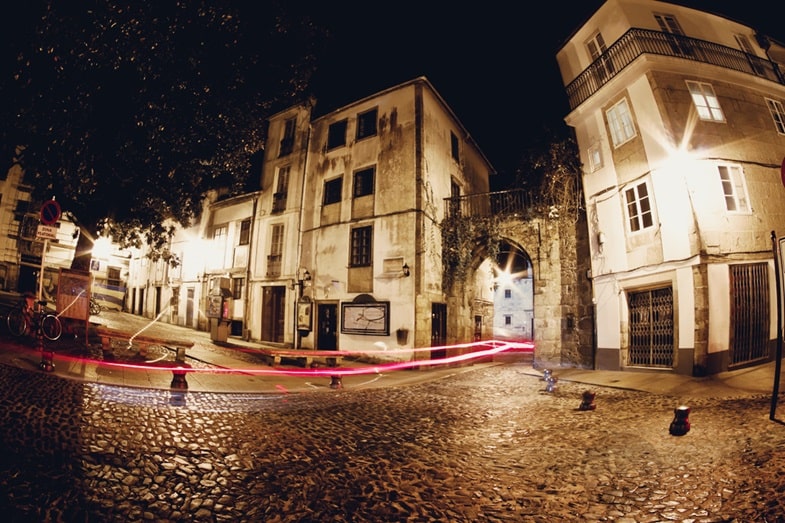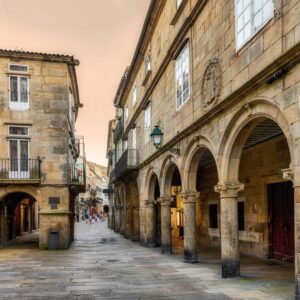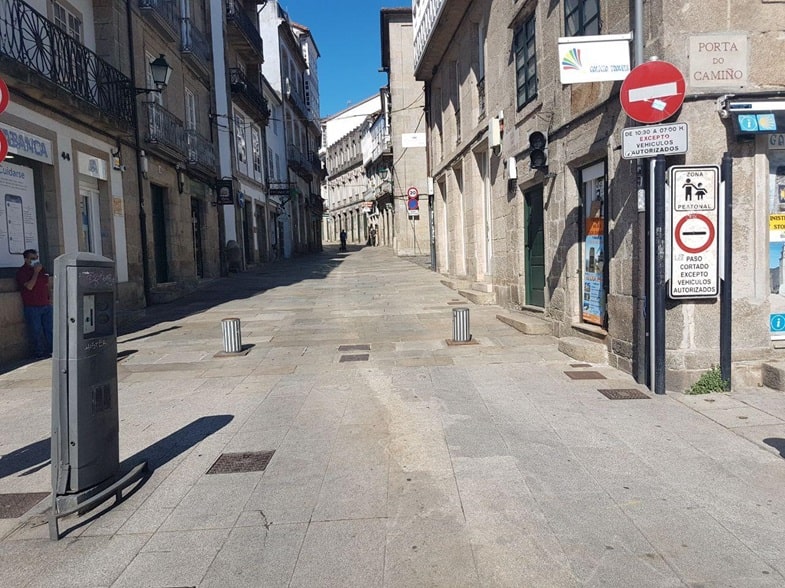Wall of Santiago de Compostela: History and Heritage

The Wall of Santiago de Compostela
Santiago de Compostela, recognized worldwide for its cathedral and as the final destination of the famous Camino de Santiago pilgrimage route, is also home to a historical feature that often goes unnoticed by many visitors: the remains of its medieval wall. Built to protect the city and its inhabitants, the wall of Santiago de Compostela stands as a symbol of both defense and historical identity, emphasizing the strategic and cultural significance of this Galician city during the Middle Ages.
Origins and Construction of the Wall
The construction of the wall of Santiago dates back to the late 11th and early 12th centuries, during the reign of Alfonso VI of León and Castile.
This monarch had a particular interest in protecting Santiago due to its religious significance, as by this time, the city had already become a crucial pilgrimage site in the Christian world. The wall was designed as a defensive structure meant to protect both the cathedral and the growing urban population.
The construction of the wall was a complex process that required large quantities of stone and other building materials. The builders faced irregular and challenging terrain, typical of the Galician landscape, which forced them to design a structure that adapted to the relief. This resulted in an irregular but effective layout more than two kilometers long, which completely surrounded the ancient city.
Galicia travels products
-

Rias Baixas Excursion
Rated 4.93 out of 530,00€ – 55,00€Price range: 30,00€ through 55,00€ Select date(s) This product has multiple variants. The options may be chosen on the product page -

French Way
360,00€ – 2.150,00€Price range: 360,00€ through 2.150,00€ Select options This product has multiple variants. The options may be chosen on the product page -

FREE TOUR – old town
Rated 5.00 out of 5Select date(s) -
Sale!

Finisterre, Muxía, Costa da Morte
Rated 4.94 out of 520,00€ – 49,00€Price range: 20,00€ through 49,00€ Select date(s) This product has multiple variants. The options may be chosen on the product page
Architectural Features
The wall of Santiago de Compostela was primarily made of stone, a material abundant in the region. It had an average height of eight meters and a thickness of nearly two meters. Inside, the wall included a passageway that allowed guards to move around during surveillance. Along the wall, several towers and battlements were constructed, enabling the defenders to maintain a broad view of the surroundings and respond to possible attacks.
The wall featured seven main gates, among which the Puerta del Camino stood out (now known as Puerta del Camino Francés and housing the office of Galicia Travels) and the Puerta de Mazarelos, the only one still standing in the city today. These gates served as checkpoints where access to the city was controlled, and taxes were collected from merchants and visitors. Additionally, these entrances acted as health barriers during epidemics, preventing the entry of sick individuals.
Defensive and Symbolic Function
In its defensive function, the wall played a fundamental role in ensuring the security of Santiago. At that time, Galicia was a region of constant internal and external conflicts, with raids and looting being relatively common. The wall of Santiago de Compostela provided protection not only against attacks from enemy armies but also against bandits and criminals who could threaten the safety of both pilgrims and residents.
In addition to its defensive role, the wall held symbolic significance, as it represented the power and autonomy of the city in relation to other jurisdictions. Being walled gave Santiago a special status and highlighted its importance within the Iberian Peninsula. The wall also helped reinforce the idea of Santiago as a sacred and protected city, further cementing its appeal as a major religious destination.
Read also: Brief history of the Camino de Santiago

The Decline and Loss of the Wall
Over time, the defensive function of the wall became less important. In the 18th century, Santiago de Compostela began to experience urban expansion, and the old walls became an obstacle to the city’s growth. Rather than being adapted or restored, many sections of the wall were demolished to make way for new buildings and streets. The disappearance of parts of the wall was also due, in part, to a lack of resources for its maintenance and the perception that it was no longer necessary in an era of greater social stability.
Today, only some fragments of the original wall remain, with the most notable being the Mazarelos Gate and the Plaza de Abastos.
Heritage and Conservation
Today, the remains of the wall of Santiago de Compostela are an important point of cultural and historical interest. The conservation of these vestiges allows visitors and residents to better understand the evolution and development of Santiago over the centuries. In this sense, local authorities have undertaken efforts to restore and protect the remaining sections of the wall, recognizing its value as cultural heritage and its potential for tourism.
In fact, it is now possible to take a free tour in Santiago to visit the remains of the wall. Agencies such as Galicia Travels offer numerous activities that include a visit to these historic remains. Without a doubt, it’s a cultural experience not to be missed.
